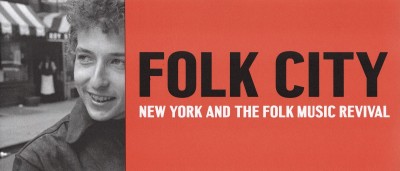Jewish New Yorkers and the Origins of the Folk Music Revival, 1948 – 1958
Sunday, December 13, 2015 at 1:00pm
Speaker Stephen Petrus, Museum of the City of New York
Included with Museum Admission
Business and consumer trends in New York reshaped the folk music industry from the late 1940s to the late 1950s, transforming the genre from an art form largely associated with leftist politics to a popular craze with mass appeal nationwide. The era saw the wild success of the Weavers, a groundbreaking quartet that showed the lucrative potential of folk music. The period also witnessed the establishment of numerous record companies and other commercial music institutions and the increasing embrace of the genre by an expanding middle class with greater disposable income. Some of the record labels were Folkways, founded by Moses Asch in 1948; Vanguard, by Maynard and Seymour Solomon in 1950; Elektra, by Jac Holzman in 1950; and Riverside, by Orrin Keepnews in 1953. Other developments included the birth of Sing Out! magazine, co-founded by Irwin Silber in 1950, and the opening of the Folklore Center in Greenwich Village by Izzy Young in 1957. To be sure, these were all modest organizations at first, targeted at a niche audience. But they nourished folk music in different ways and created a groundswell of interest, by recording a variety of artists, producing albums, sponsoring concerts, and stimulating provocative debates about the role of songs in politics and culture writ large.

The expansion of the folk music industry also illuminated the increasing entrepreneurial presence of Jews in the city. Asch, the Solomons, Holzman, Keepnews, Silber, Young, and other folk music businessmen and journalists, such as Harold Leventhal, Art D’Lugoff, and Robert Shelton, were all Jewish, though they were hardly a unified group and in fact often competed with each other and clashed about prevailing trends in the industry. On this level, they demonstrated the values of dissent and argumentation that typified postwar Jewish culture in New York. For the most part second-generation in background, they also reflected a creative and sometimes paradoxical blend of the capitalist economic spirit and progressive political commitment that characterized Jewish culture in the city. Despite all their differences, folk music captivated them. Their allegiance was profound and intense. Their institutions made New York the epicenter of the nationwide revival by the late 1950s.


Comments are closed.